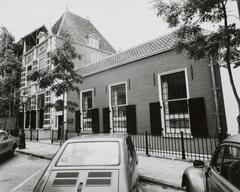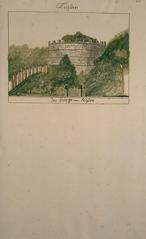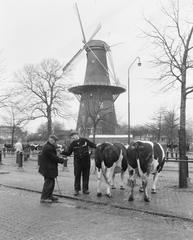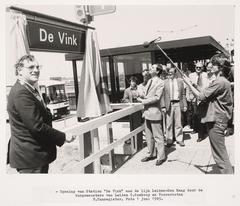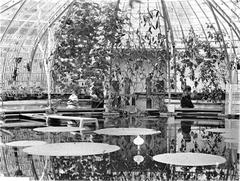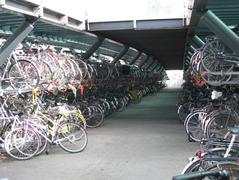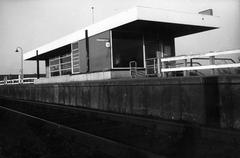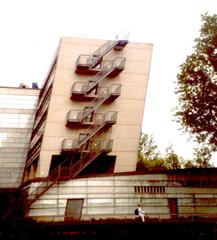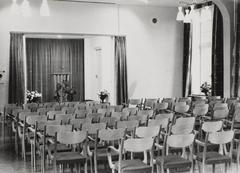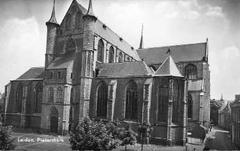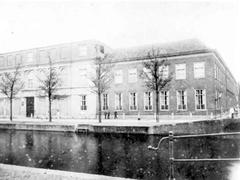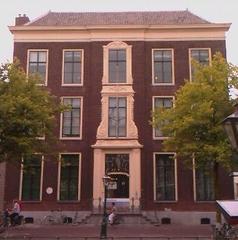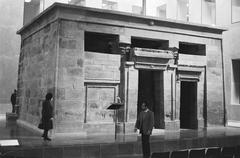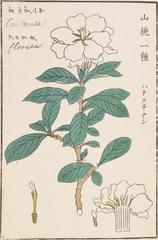Jaagbrug Leiden: Visitor Guide, Hours, Tickets, and Historical Insights
Date: 04/07/2025
Introduction
Nestled within the picturesque canals of Leiden, the Jaagbrug stands as a testament to Dutch engineering, urban planning, and cultural heritage. As an enduring symbol of the city’s historical identity, Jaagbrug connects not only the city’s neighborhoods but also its vibrant past and present. This comprehensive guide covers everything you need to know about visiting Jaagbrug Leiden—its historical context, architectural features, visitor information, accessibility, nearby attractions, and practical travel tips.
Table of Contents
- Origins and Development of Leiden’s Canal System
- The Jaagbrug: Function and Historical Context
- Architectural Features and Evolution
- Visiting Jaagbrug: Hours, Tickets, and Accessibility
- Guided Tours and Special Events
- Jaagbrug in Leiden’s Urban Fabric
- Photography and Visitor Tips
- Cultural and Economic Significance
- Preservation and Modern Use
- Getting to Jaagbrug: Transport and Directions
- Accessibility and Visitor Facilities
- Nearby Attractions
- Frequently Asked Questions (FAQ)
- Conclusion and Call to Action
- Sources
Origins and Development of Leiden’s Canal System
Leiden boasts the second-largest canal network in the Netherlands, with over 28 kilometers of waterways weaving through the historic city center. Constructed primarily during the 17th century Dutch Golden Age, these canals initially served both defensive and commercial purposes. They protected the city from invaders and enabled efficient transportation of goods, contributing to Leiden’s economic prosperity (visitleiden.com; onedayhit.com). Today, the canal network remains largely intact, offering a unique lens into the city’s past.
The Jaagbrug: Function and Historical Context
The Jaagbrug, whose name comes from “jaagpad” (towpath), played a pivotal role in Leiden’s flourishing trade era. In the age of trekschuiten—barges towed by horses or people along towpaths—the Jaagbrug enabled these routes to cross canals and roads without impeding water traffic. This infrastructure was essential for maintaining the flow of goods, especially textiles, which underpinned Leiden’s prosperity (visitleiden.com).
Architectural Features and Evolution
Early Jaagbrug structures were wooden, but as Leiden’s wealth and engineering advanced, they were rebuilt in stone or brick. The bridge features low arches and robust construction, often incorporating drawbridge or swing mechanisms to accommodate tall vessels. Wrought iron railings, brick or stone abutments, and traditional Dutch color schemes (white or green) characterize its design. The operator’s hut is typically adorned with classic Dutch architectural elements, enhancing the bridge’s visual identity (explorecity.life; touristplaces.guide; The Design Gesture).
Even as canal transport evolved, the Jaagbrug remained integral, adapting for use by pedestrians, cyclists, and vehicles, and reflecting Leiden’s commitment to blending heritage with modern urban functionality.
Visiting Jaagbrug: Hours, Tickets, and Accessibility
- Visiting Hours: Open to the public 24/7, year-round. There are no restricted hours.
- Tickets: No ticket or entrance fee is required.
- Accessibility: The bridge is generally accessible to pedestrians, cyclists, and, in many cases, wheelchair users. Some traditional bridges may have inclines or steps—check with the VVV Tourist Office for alternative accessible routes.
- Facilities: Restrooms and public amenities are available at Leiden Centraal station and nearby establishments.
Guided Tours and Special Events
While there are no dedicated Jaagbrug-only tours, many walking, cycling, and boat tours of Leiden’s historic core include the bridge as a highlight. Guides provide historical context and stories about the bridge’s role in city life. Canal cruises, like those by Rederij Rembrandt, offer unique perspectives from the water. Check local tourism websites for seasonal festivals and events that may feature the Jaagbrug (onedayhit.com).
Jaagbrug in Leiden’s Urban Fabric
Strategically located, Jaagbrug connects key neighborhoods and offers access to major landmarks such as Pieterskerk, Leiden University, and the city hall. The bridge is also a vital route for pedestrians and cyclists, supporting sustainable transport and featuring prominently in annual celebrations like the 100 Bridges Run (holland.com; 100 Bridges Run).
Photography and Visitor Tips
- Best Photographic Times: Sunrise and sunset provide stunning light for photos, with reflections on the canal and views of historic facades.
- Cafés and Social Hubs: Numerous canal-side cafes and restaurants nearby offer scenic spots to relax and enjoy the atmosphere.
- Crowds: The bridge is busiest on weekends and during festivals; early mornings or weekdays are quieter.
- Weather: Dutch weather is unpredictable—bring a rain jacket or umbrella.
Cultural and Economic Significance
During the Dutch Golden Age, Leiden’s canal system and bridges like Jaagbrug were vital for the textile trade and daily life. Today, the bridge remains a symbol of communal spirit and resilience, featured in local art, literature, and city events. Community gatherings, markets, and festivals frequently use the area around Jaagbrug, reinforcing its role as a cultural hub (novaontheroad.com; travelasker.com).
Preservation and Modern Use
Leiden prioritizes conserving its historic bridges. Restoration projects ensure structural integrity while maintaining authenticity, using modern technologies like 3D modeling for precision (shs-conferences.org). Today, the Jaagbrug seamlessly blends historical significance with everyday urban use, supporting pedestrians, cyclists, and occasional vehicles.
Getting to Jaagbrug: Transport and Directions
By Train
Leiden Centraal station is the city’s main hub, with direct connections from Amsterdam (35–37 minutes) and The Hague (12 minutes). From the station, Jaagbrug is a 15–20 minute walk or a short bike ride (bestthingstodoin.city).
By Bus
Leiden’s extensive bus network offers frequent connections from the station to city districts. Use the 9292 app or NS app for real-time schedules.
By Car
Accessible from the A4 motorway, but parking in the center is limited. Park & Ride options and garages are available on the city’s outskirts.
By Bicycle
Leiden is highly bike-friendly. Rental shops are widely available, and cycling from surrounding towns or even Amsterdam is a scenic option (bestthingstodoin.city).
Maps and Wayfinding
The VVV Tourist Office provides free maps and navigation advice.
Accessibility and Visitor Facilities
- Physical Accessibility: Most main routes are wheelchair accessible, though some bridges have inclines/steps—ask the tourist office for details.
- Transport Accessibility: Buses and trains are accessible, with elevators and ramps at Leiden Centraal.
- Restrooms: Available at the station and nearby parks/museums.
- Wi-Fi: Free at Leiden Centraal, many cafés, and public spaces.
- Language: Signage is typically in Dutch and English; staff at major sites speak English.
Nearby Attractions
- De Burcht van Leiden: Ancient fortress with panoramic views.
- Rapenburg Canal: Renowned for its beauty and historic significance.
- Museum De Lakenhal: Leiden’s premier art and history museum.
- Hortus Botanicus: One of the world’s oldest botanical gardens.
- Canal Tours: Boat tours depart near Jaagbrug, offering unique city views (dutchreview.com).
Frequently Asked Questions (FAQ)
Q: What are Jaagbrug’s visiting hours?
A: The bridge is open 24 hours a day, 7 days a week.
Q: Is there an admission fee or ticket required?
A: No, Jaagbrug is freely accessible.
Q: Are guided tours available?
A: Many city walking, cycling, and boat tours feature Jaagbrug as a highlight.
Q: Is Jaagbrug wheelchair accessible?
A: Most routes are accessible, but check with the tourist office for details on inclines or steps.
Q: How do I get to Jaagbrug from Leiden Centraal?
A: It’s a 15–20 minute walk or a short bike ride; signage and maps are available at the station and tourist office.
Q: Can I take photos at Jaagbrug?
A: Yes, it is a popular spot for photography, especially during golden hour.
Conclusion and Call to Action
Jaagbrug is more than a bridge; it’s a gateway to Leiden’s rich history, architectural elegance, and lively urban culture. Whether you’re exploring the city’s iconic canals, joining a guided tour, or simply enjoying a canal-side coffee, Jaagbrug offers an authentic Leiden experience.
Plan your visit today! Download the Audiala app for guided tours and local insights, and follow our updates for the latest on Leiden’s events and attractions.
Sources
- visitleiden.com
- onedayhit.com
- touristplaces.guide
- shs-conferences.org
- novaontheroad.com
- holland.com
- explorecity.life
- bestthingstodoin.city
- dutchreview.com
- The Design Gesture
- 9292 app
- NS app
